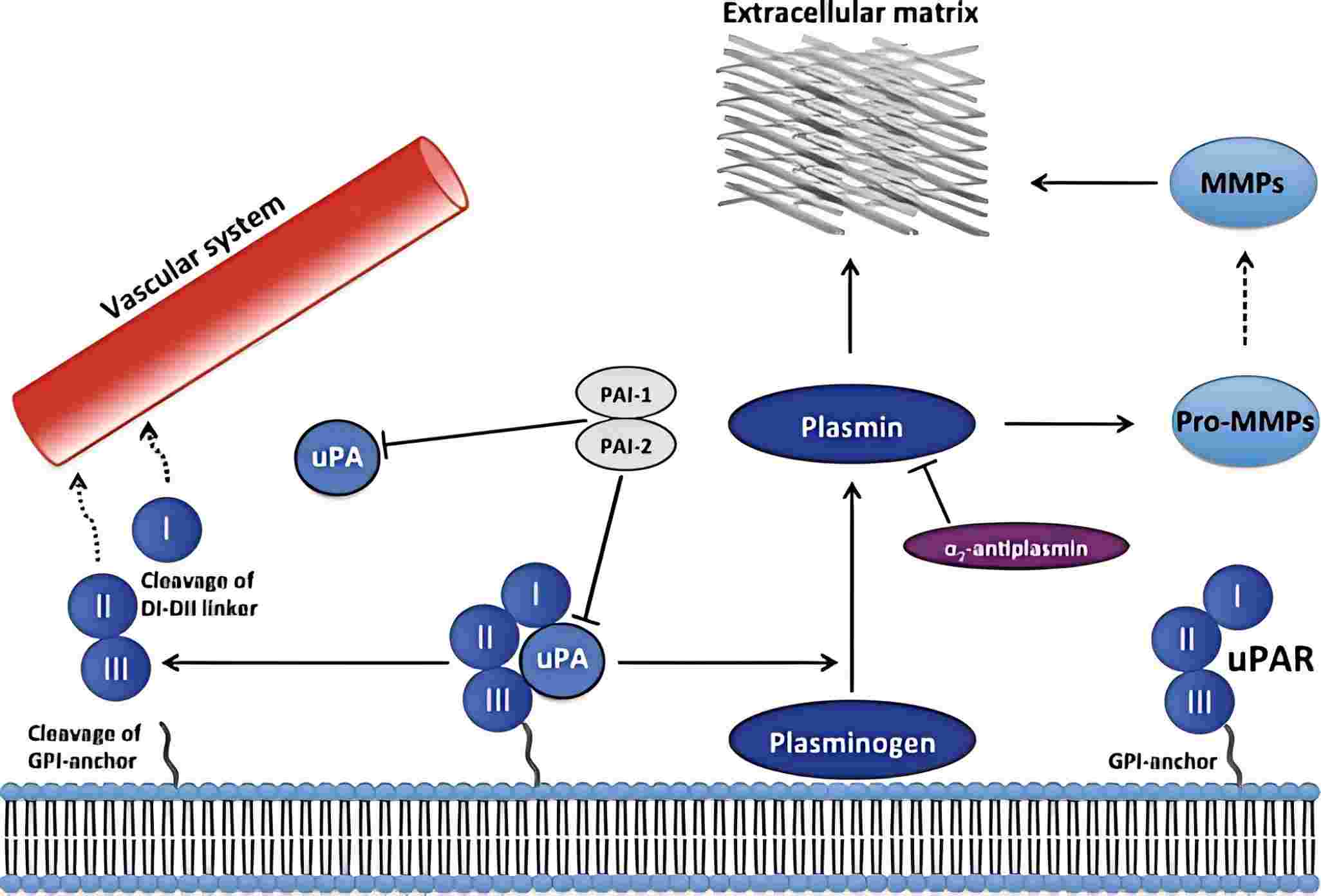Creative Biolabs is a world-leading service provider of application-specific antibody development. Here, we introduce our in vitro diagnostic (IVD) antibody development and immunoassay development services targeting uPAR marker. Our state-of-the-art technologies ensure that our clients receive high-quality, stable, flexible, and cost-effective products and services.
Introduction of uPAR
The urokinase-type plasminogen activator receptor (uPAR), also known as uPA receptor or Cluster of Differentiation 87 (CD87), is a multidomain glycoprotein tethered to the cell membrane with a glycosylphosphatidylinositol (GPI) anchor. uPAR consists of three different domains of the Ly-6/uPAR/alpha-neurotoxin family which are necessary for high-affinity binding of the primary ligand, urokinase. As a part of the plasminogen activation system, uPAR plays an important role in various physiological processes involving tissue remodelings, such as mammary gland involution and wound healing. Moreover, recent studies have shown that uPAR is expressed on various cell types and participates in numerous immunologic functions including migration, adhesion, angiogenesis, fibrinolysis, and cell proliferation.
 Fig. 1 Schematic overview of the uPA/uPAR system.1
Fig. 1 Schematic overview of the uPA/uPAR system.1
uPAR Marker of Sepsis
Sepsis is the result of the host response to infection by microbial pathogens and a leading cause of death across the world. It has been reported that the uPAR/uPA system participated in the migration of inflammatory cells from the bloodstream into tissues against infection. In addition, uPAR is cleaved from the cell surface by proteases to create the soluble form of the receptor, suPAR, which can be detected in blood, urine, and cerebrospinal fluid during inflammatory stimulation process. Most importantly, suPAR levels are significantly higher in patients with sepsis than those without and also higher in critically ill patients than normal people. In this case, uPAR can be used as a potential and specific marker for the diagnosis of sepsis.
IVD Antibody Development Services for uPAR Marker
With the rapid development of IVD technology, IVD antibodies have been widely used for the diagnosis of numerous diseases, including but not limited to sepsis. Antibody-based immunoassays are the most commonly used diagnostic assays for the detection of analytes in clinical samples. Serving as a leading company in IVD antibody production, Creative Biolabs provides a full range of IVD antibody development services for the uPAR marker to help our global clients with the diagnosis of sepsis. Besides antibody generation, Creative Biolabs also offers diagnostic immunoassay development services, including feasibility analysis, assay design, assay protocol establishment, assay optimization, and kit production.
If you are interested in the services we can provide, please feel free to contact us or get a quote.
Reference
- Persson, Morten, and Andreas Kjaer. "Urokinase-type plasminogen activator receptor (uPAR) as a promising new imaging target: potential clinical applications." Clinical Physiology and Functional Imaging 33.5 (2013): 329-337.
For Research Use Only.

